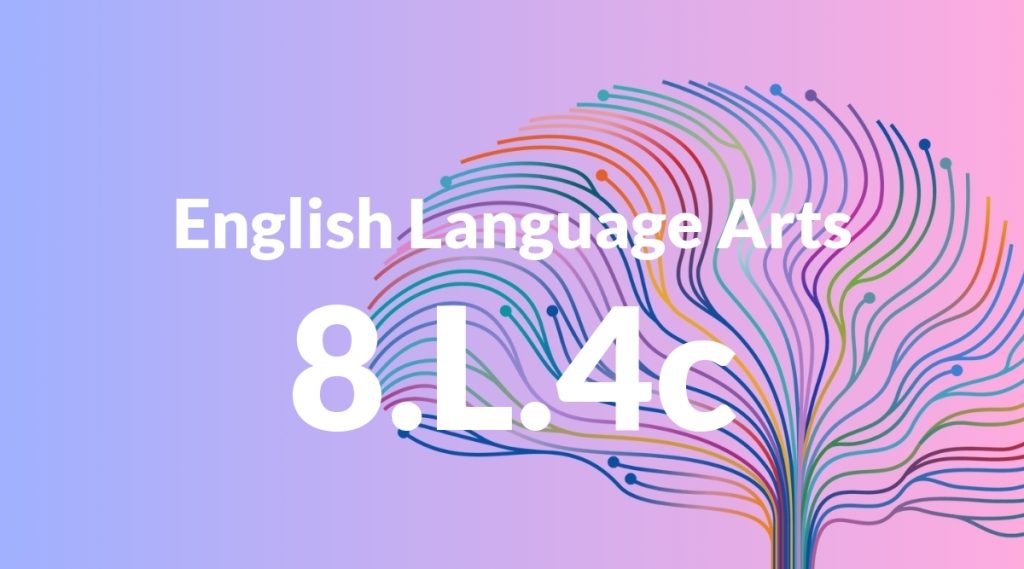Standard: 8.L.4c – Consult general and specialized reference materials (e.g., dictionaries, glossaries, thesauruses), both print and digital, to find the pronunciation of a word or determine or clarify its precise meaning or its part of speech.
Grade level: Grade 8
Subject: English Language Arts
Domain: Language
Teacher Overview
This standard emphasizes the importance of using various reference materials to understand and accurately use language. It is crucial for students to develop skills in consulting dictionaries, glossaries, and thesauruses, both in print and digital formats. Mastery of this standard will enhance students’ vocabulary, reading comprehension, and overall language proficiency. Students should already know how to use a basic dictionary, understand alphabetical order, and have a grasp of parts of speech. They should also be comfortable using context clues to infer the meaning of unfamiliar words.
After mastering this standard, students will be able to independently verify word meanings and pronunciations, enhancing their vocabulary and reading comprehension. They will also be able to use reference materials to support their writing and speaking skills.
Common Misconception 1
Some students may believe that all dictionaries are the same and provide identical information. This is incorrect because different dictionaries and reference materials offer varied types of information and can serve different purposes.
Intervention 1
To address this misconception, provide students with a variety of dictionaries and reference materials. Have them compare the information provided by each and discuss the unique features and purposes of each type.
Common Misconception 2
Another common misconception is that digital reference tools are always more accurate than print versions. This is not necessarily true, as the accuracy of digital tools can vary widely.
Intervention 2
Encourage students to cross-reference digital sources with reputable print sources. Teach them to critically evaluate the credibility of digital tools and to recognize the value of traditional print resources.
Prerequisite Knowledge
Students should be familiar with basic dictionary skills, including understanding alphabetical order and the ability to recognize word entries. They should also have a basic understanding of parts of speech and the ability to use context clues to infer word meanings.
Subsequent Knowledge
Students will develop the ability to independently verify word meanings and pronunciations, enhancing their vocabulary and reading comprehension. They will also be able to use reference materials to support their writing and speaking skills.
Instructional Activities
- Dictionary scavenger hunt: Students find specific information using different types of dictionaries.
- Thesaurus challenge: Students find synonyms and antonyms for a list of words.
- Glossary exploration: Students use subject-specific glossaries to define terms in a science or social studies text.
- Digital vs. print: Students compare information from digital and print reference materials.
- Word pronunciation practice: Students use dictionaries to find and practice the pronunciation of challenging words.




